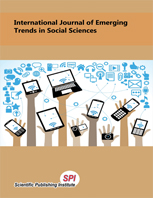Sexual Behavior and Abuse: A Case Study of University Undergraduates in Tertiary Institutions in Imo State, Nigeria
DOI:
https://doi.org/10.20448/2001.22.52.63Keywords:
Sexual behaviors, Abuse, Female, Institutions, Nigeria.Abstract
Introduction: In young people including adolescents, risky sexual behavior has been recognized as an important health, social and demographic concern in the developing world. Aim: To assess sexual behaviors and their association with current and life-time occurrence of sexual abuse among female undergraduates in tertiary institutions in Imo State, Nigeria. Methodology: This was a school based cross sectional study involving 600 female students selected from tertiary institutions in Imo State Nigeria, using the multistage sampling technique. Data was collected using a semi-structured, self-administered questionnaire and analyzed using a data software (EPI-INFO version 3.3.2). Descriptive variables were presented using summary indices, frequency tables/percentages, and graph while associations between variables were done using the Chi-square and binary regression. A p-value of 0.05 was considered significant. Results: The mean age of the students was 21.73.2 years. About 65.2% of the respondents have initiated sexual intercourse and of this proportion, 75.6% were sexually active in the last one year preceding survey. The mean age at initiation of sexual debut among the students was 18.93.8 years and the commonest form of sexual act practiced was penile/vaginal sex. About 15.2% of the students had been currently abused. Predictors of current sexual abuse were; ever had sexual intercourse (OR.4.63), being within 14-19 years of age at first sexual initiation, (OR: 0.42), had first sexual exposure with a casual partner (OR: 12.38), and being sexually active in the last 1 year preceding study, (OR: 2.16). Conclusion: Risky sexual behaviors were prevalent and were found to influence the occurrence of sexual abuse, among the students. Thus, there is need to institute appropriate prevention strategies to limit risky sexual behaviors and it consequences among adolescents and young adults.


